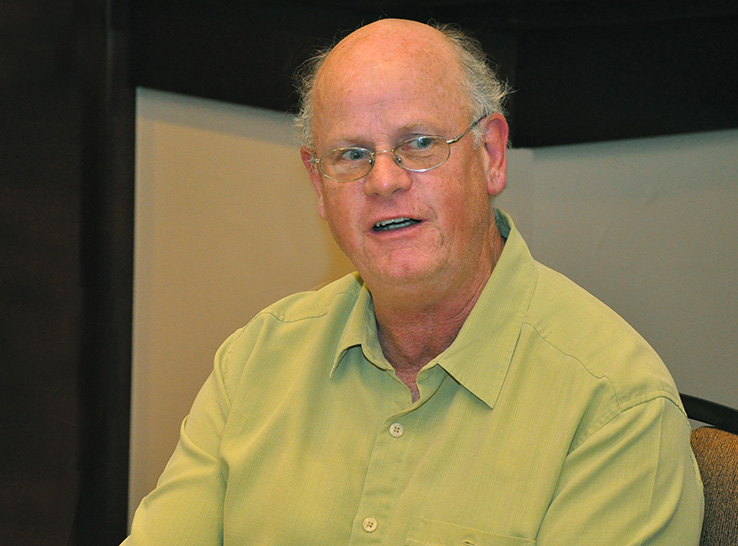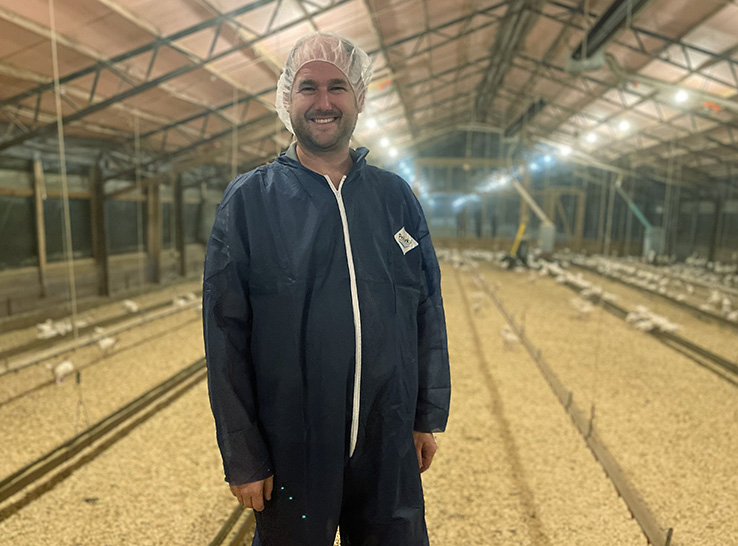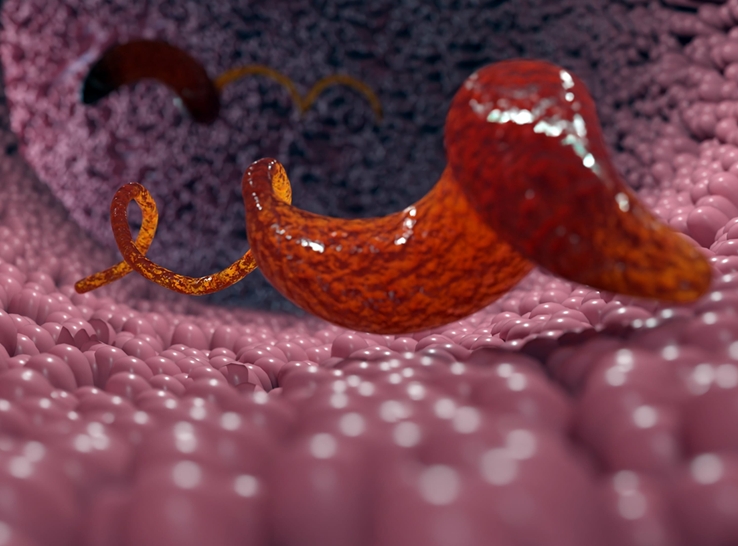While at the 2023 Poultry Science Association conference, Modern Poultry editor Joseph Feeks sat down with coccidiosis guru Greg Mathis, PhD, Southern Poultry Research, Inc., to talk about Tyson Foods’ plans to drop the NAE label and its potential impact on the industry’s use of ionophores. Update: Mathis’s input became even more relevant in March 2024, when Chick-fil-A announced that it would begin sourcing chickens raised without antibiotics used in human medicine, which is pretty much all of them.
MP: The Wall Street Journal recently reported that Tyson Foods was planning to drop its “no antibiotics ever” (NAE) label at the end of this year and would resume using antibiotics not used in human medicine. It’s reasonable to assume that other major producers might follow the same path to remain competitive. This obviously opens the door for ionophores — a class of animal-only antibiotics that long served as the foundation for coccidiosis-management programs. As a coccidiosis specialist, what are your thoughts on this development?
Mathis: I was excited to hear that. When we took out the ionophores, we reduced our arsenal of anticoccidials from 12 down to 7 — almost cutting it in half. From a resistance standpoint, that also put a lot of pressure on the chemicals [non-antibiotic anticoccidials] that were still on the market. So, bringing back the ionophores is certainly a benefit.
MP: Some people might say this is a step backwards. The poultry industry has made great progress with the coccidiosis vaccines. Producers have a much better understanding of how they work and how to use and manage them effectively. Producers are also using many alternative products — the botanicals, probiotics, essential acids and so on. If producers resume using ionophores, does this mean they will back off vaccines and alternative products?
Mathis: Well, I think any alternative feed additives will still be investigated for efficacy and will still be used but probably not as hard and fast as we were doing it over the past 5 to 7 years. Ionophores are FDA-approved drugs. Plain and simple, you cannot beat them in terms of efficacy.
As for the vaccines, I definitely think the industry will continue to use them extensively, because they go hand in hand with ionophores and chemicals. You can use them in different seasons and in rotation programs, which helps to preserve the efficacy of the feed medications.
MP: Most operations with NAE production schemes have been using vaccines in so-called bioshuttle programs, where they would vaccinate in the hatchery and then follow with one of the synthetic anticoccidials about 2 weeks later. Now they would have the option of using an ionophore. Does it make sense to use ionophores in bioshuttle programs?
Mathis: Oh, yeah. The bioshuttle was actually originally set up to use with ionophores such as salinomycin, monensin, lasalocid and narasin. The benefit, of course, of using an ionophore is it has an antibiotic effect. Even though it’s not a human antibiotic, it’s an antibiotic that’s effective against the clostridial organisms. We definitely have shown that there’s less necrotic enteritis in a bioshuttle program with an ionophore versus a bioshuttle program with a chemical.
MP: If ionophores are going to see more action, is it better to use them certain times of year?
Mathis: Ionophores traditionally were used in the spring and the fall; nicarbazin was used mostly in the winter, and in the summertime we’d use vaccine. I predict that will still be the standard. After nicarbazin, the Eimeria load is pretty low going into the next cycle, and so that doesn’t put a lot of pressure on the ionophores. If we can maintain the sensitivity of ionophores, that would be wonderful.
MP: Let’s say we have a farm that’s been on an NAE program. We now have clearance from management to use ionophores. What would be some of the first changes that you would make?
Mathis: I think it’s more important to say what I wouldn’t change. For example, we know that longer downtimes between flocks are actually beneficial for managing coccidiosis, so I would try to keep those. I’m sure that for investment purposes, some producers may try to go back to shortening them, but that would be a mistake, in my opinion.
I would also continue to use the vaccines in a rotation with the medications. However, brooding time and some of those things might change now that we’re not having to worry as much about necrotic enteritis maybe as we did before.
MP: Looking back when ionophores were used routinely, producers made mistakes and overused certain products. As we bring ionophores back into these programs, what suggestions do you have for using them more judiciously?
Mathis: Well, it’s something we’ve cautioned producers about all along — how long should you stay on one particular ionophore. We’ve always known that you shouldn’t just shift from, say, a monovalent ionophore such as salinomycin or monensin to another monovalent. Maybe shift over to a divalent ionophore like lasalocid. Let the Eimeria organisms see something different.
We do know that back in the day, when salinomycin cost $2 to $3 a ton [of feed], everybody used it — all the time, all year long. They never rotated. And then, of course, that did lead to resistance. The big thing now is that because ionophores haven’t been used, resistance may have dissipated and they’ll actually be better than they were a few years ago.
MP: How much of an improvement would you expect to see?
Mathis: I don’t know. Because the ionophores haven’t been used extensively in recent years, it’s difficult to find ASTs (anticoccidial sensitivity tests) comparing ionophore performance from year to year. But from the reports that I have from University of Georgia, ionophores could be up to 50% stronger than they were under certain conditions. That’s not across the board. But on farms that have been off ionophores for several years, I think it’s going to be surprising to see how well they work compared to what they were using.
MP: So, with ionophores expected to make a comeback, where does this leave probiotics, botanicals, essential acids and other alternative products that producers used in NAE programs?
Mathis: I think those types of products still have a niche. The ones that I really would be curious to see about are the sapponins and the essential oils, which were shown to have some anticoccidial and antimicrobial activity. Will they still be needed if you’re using an ionophore?
Those products really work better with vaccine programs. So, I think as long as you’re using vaccines, they should be considered. I hope we’re smart enough to find a use for everything that we have, because we’ve learned a lot about these alternative feed additives.
MP: Do you see vaccines remaining the foundation of most coccidiosis-management programs?
Mathis: The foundation? I don’t know — that’s a good question. I think most people would still prefer the reliability of an anticoccidial drug. There’s still variability in coccidiosis vaccination. But again, if we wanted to rest the ionophores and other medications and switch to vaccines, summertime is ideal because the Eimeria challenge is low. And of course, we all know that most of the vaccines will help replace Eimeria sensitivity to a degree for a short period of time.
Editor’s note: This article is based on a transcript of a recent interview. Statements were edited for brevity and clarity. Dr. Mathis was also given the opportunity to review his edited remarks for accuracy.
Editor’s note: The opinions and/or recommendations presented in this article belong to the author and are not necessarily shared by Modern Poultry.








